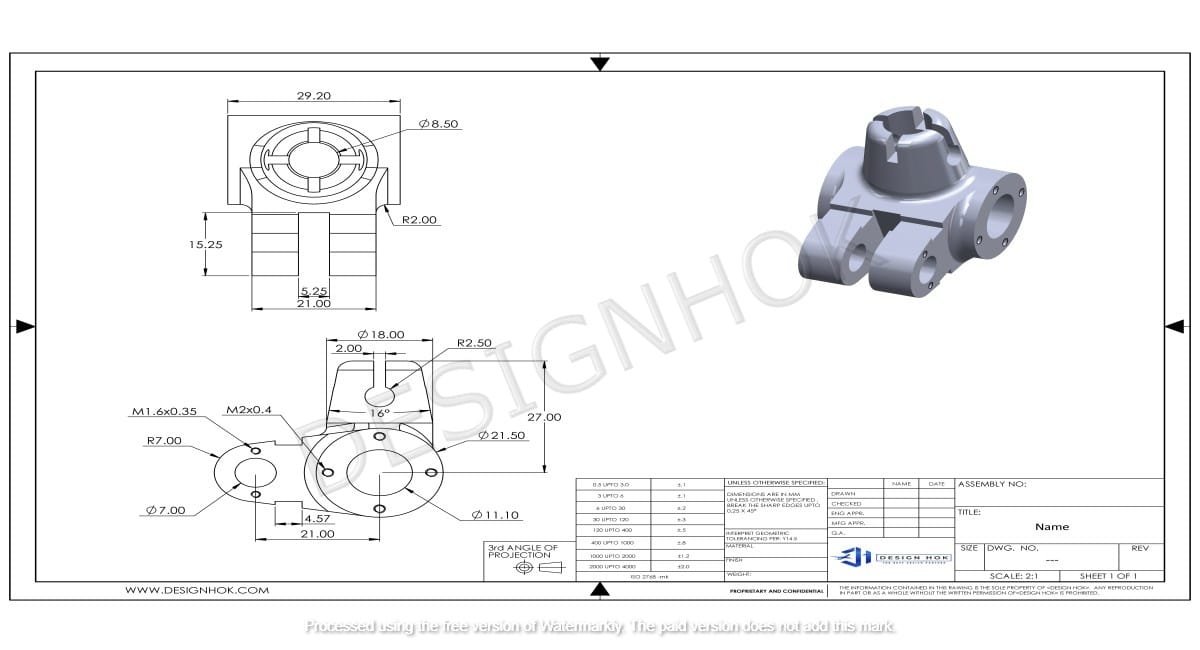2D Computer-Aided Design (CAD) has been a cornerstone of design and drafting for decades, helping professionals create precise layouts, plans, and technical drawings. While it is undeniably useful, especially for simpler designs, 2D CAD comes with limitations that can hinder productivity and accuracy in certain contexts. Understanding these disadvantages is essential for determining whether it’s the right tool for your design needs.
1. Limited Visualization Disadvantages of 2D CAD
One of the most significant drawbacks of 2D CAD is its inability to provide a realistic visualization of designs. Unlike 3D CAD, which creates lifelike models that you can rotate and examine from various angles, 2D CAD restricts you to flat, two-dimensional representations. This can make it challenging to fully grasp complex designs, especially for intricate projects.
2. Difficult Error Detection
In 2D CAD, errors like overlapping lines, misaligned elements, or overlooked dimensions can be hard to spot. Without the depth and interactivity of 3D modeling, inconsistencies may go unnoticed until the design reaches the production phase, leading to costly mistakes.

3. Time-Consuming for Complex Designs
When dealing with complex assemblies or designs, 2D CAD can become a tedious tool. Designers must create multiple views (e.g., top, side, and front) to represent all aspects of a project. This not only takes more time but also increases the chance of discrepancies between views.
4. Inefficiency in Modifications
Updating a design in Disadvantages of 2D CAD often requires manually changing every affected view. For instance, if a component size changes, the designer must adjust its representation across all related drawings. This process can be labor-intensive and prone to human error, especially for large-scale projects.
5. Lack of Realistic Simulations
Disadvantages of 2D CAD does not support simulations, such as stress tests, material behavior analysis, or motion studies, which are crucial for ensuring the functionality and durability of designs. Designers relying solely on 2D tools often need additional software for these purposes, adding to costs and workflow complexity.
6. Limited Collaboration
In a modern design environment, collaboration is key. Disadvantages of 2D CAD files can be difficult to share and interpret among team members, especially when compared to interactive 3D models. Miscommunication and misunderstandings are more likely to occur when relying on 2D representations alone.
7. Challenges in Communicating with Clients
For clients who lack technical knowledge, Disadvantages of 2D CAD can be difficult to interpret. The flat representation does not convey the depth and spatial relationships that a 3D model provides, making it harder to communicate design ideas effectively and gain approval.
8. Dependency on Skilled Users
Disadvantages of 2D CAD requires a high level of skill and precision. Designers must be adept at understanding technical drawing conventions, dimensions, and annotations. For those without formal training, creating accurate and professional 2D drawings can be a daunting task.
9. Obsolescence in Advanced Industries
Many industries, such as aerospace, automotive, and architecture, are shifting toward 3D modeling and Building Information Modeling (BIM) for their advanced capabilities. As these tools become standard, Disadvantages of 2D CAD risks becoming outdated for complex and innovative projects.

10. Limited Scope for Automation
Modern design software increasingly integrates automation and parametric modeling, where changes in one part of a design automatically update related components. Disadvantages of 2D CADlacks this feature, requiring more manual input and increasing the potential for inconsistencies.
11. No Real-Time Interactions
Disadvantages of 2D CAD does not allow for real-time interaction with the design. Designers cannot manipulate or experiment with a model to explore different configurations, making the creative process less dynamic and flexible.
Conclusion
While Disadvantages of 2D CAD remains a valuable tool for simpler projects and specific tasks, its limitations make it less suitable for complex, collaborative, and innovative design processes. For industries that demand advanced visualization, error detection, and simulation capabilities, transitioning to 3D CAD or other modern tools can significantly enhance productivity and accuracy. Understanding these disadvantages helps businesses and individuals make informed decisions about their design workflows.





